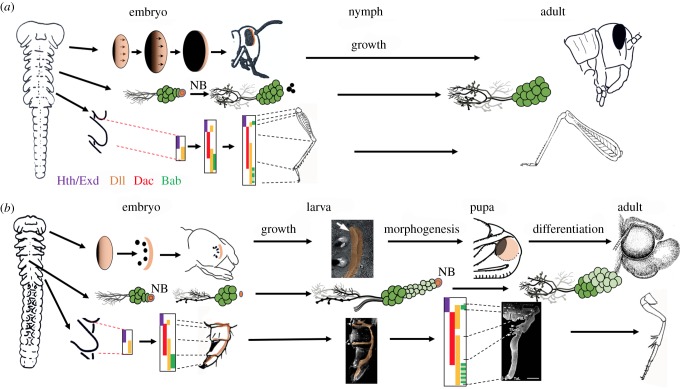Figure 2.
Comparison of embryonic and postembryonic development of a generalized hemimetabolous insect (cricket/grasshopper) with a holometabolous insect (moth). (a) Orthopteran development showing progressive patterning of the eye primordium and leg bud. Rows of ommatidia in the eye form as a wave of differentiation (arrows) moves anteriorly across embryonic primordium. CNS neuroblasts (NB) die late in embryogenesis after producing all of their neurons. The leg bud transforms into the leg by the recruitment of a sequence of proximal–distal patterning genes that determine the leg segments. These structures increase in size during nymphal life with little new additions except for ommatidia at the anterior margin of the eye. Based on [15–20]. (b) Development in the moth embryo does not progress as far as that in the Orthoptera. Partially patterned systems serve as the basis of larval structures, but persisting embryonic centres (light orange) are carried into the larva and become the imaginal primordia that generate the adult structures. Based on [16–18,21–24]. Hth, Homothorax; Exd, Extradenticle; Dll, Distal-less; Dac, Dachshund; Bab, Bric-a-brac. See text for more details.

